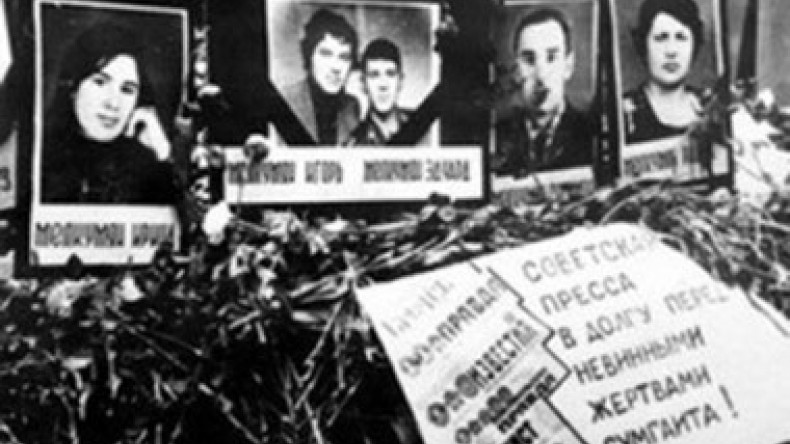
Vladislav Sved on pogroms in Sumgait: Rumors that Armenia expels Azerbaijanis was distributed by provocateurs
"On 27-29 February, 1988 mass riots took place in the city of Sumgait of the Azerbaijani SSR (25km from Baku) on ethnic grounds. In fact it was an anti-Armenian pogrom," Vladislav Sved’s article, published in stoletie.ru portal, says.
The author notes that the reason for the pogroms served the statement of Deputies of the Nagorno-Karabakh’s Autonomous Region made on 20 February in 1988 on seceding from Azerbaijan and joining Armenia. "The statement gave rise to rumors in Azerbaijan that the Nagorno-Karabakh Armenians massively kill and expel the Azerbaijanis. These rumors were spread, as it was found out later, by provocateurs. Gorbachev, however, in that explosive situation, made an ordinary appeal to the people of Armenia and Azerbaijan," the article reads.
The author notes that in response to this appeal the Azerbaijanis started a rally in Sumgait, during which they called on taking revenge on the Armenians. "By the evening of February 27, speeches from tribunes turned into actions. Hundreds of protesters, heated by the calls and the spirits, which were handed out for free from the trucks, started to smash the apartment of the Armenians and kill them. They possessed their addresses in a strange way," said Vladislav Sved.
According to the publication, the authorities of the Soviet Union were silent and it was only on February 29th when the Regiment the USSR Interior Ministry and cadets of combined arms schools of Baku managed to stop the bacchanalia of killings in Sumgait. However, the situation got completely under control only when the marines and paratroopers entered the city.
"The fact that 270 soldiers were wounded in the course of establishing an order speaks of seriousness of the situation. In general, during the three days of disorders in Sumgait hundreds of apartments of Armenians were smashed, dozens of people were killed, most of them were burnt alive after being beaten and tortured, hundreds were injured. The actual numbers of victims are still unknown," the article reads.
The author notes that on February 29, in 1988 the Politburo of the Central Committee of the Communist Party of Soviet Union acknowledged that the pogroms and murders in Sumgait were carried out on ethnic basis. However, on 18 July of the same year, at a meeting of the Presidium of the Supreme Council of the USSR, Mikhail Gorbachev ruled out the topic of ethnic discord in his speech. "At the same time the Secretary General decline further responsibility for Sumgait tragedy, saying that it would not happen, if the troops were not late for 3 hours. In short, it was the army to be blamed, not Gorbachev, who preferred to ignore the situation in Sumgait for nearly two days. That's it!" writes Vladislav Sved.
Thereafter, the investigation team of the USSR Prosecutor's Office found that not the ethnic discord but the "hooliganism" were the main motives of the crimes committed in Sumgait.
"Investigators also rejected the evidences of possible preparations for the pogroms. Sumgait events were presented to the Soviet society as a violation of public order. Such an approach to investigation excluded the possibility of identifying the real organizers of Sumgait tragedy. No common trial was conducted on these events. The case was divided into 80 episodes and was considered by courts in various cities of the Union. The real culprits of those bloody events were not punished. This gave rise to an opinion within the nationalists of various stripes that violence is an effective means of solving international issues. Which was seen in further development of the situation in the Soviet Union," sums up the author.
Newsfeed
Videos






























